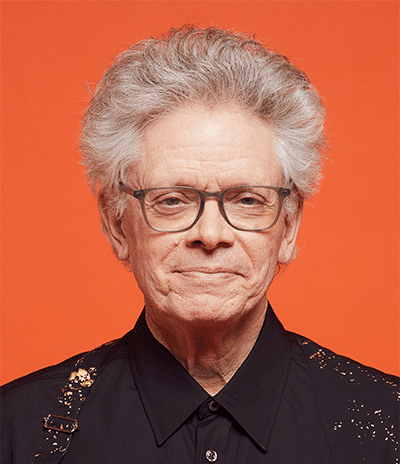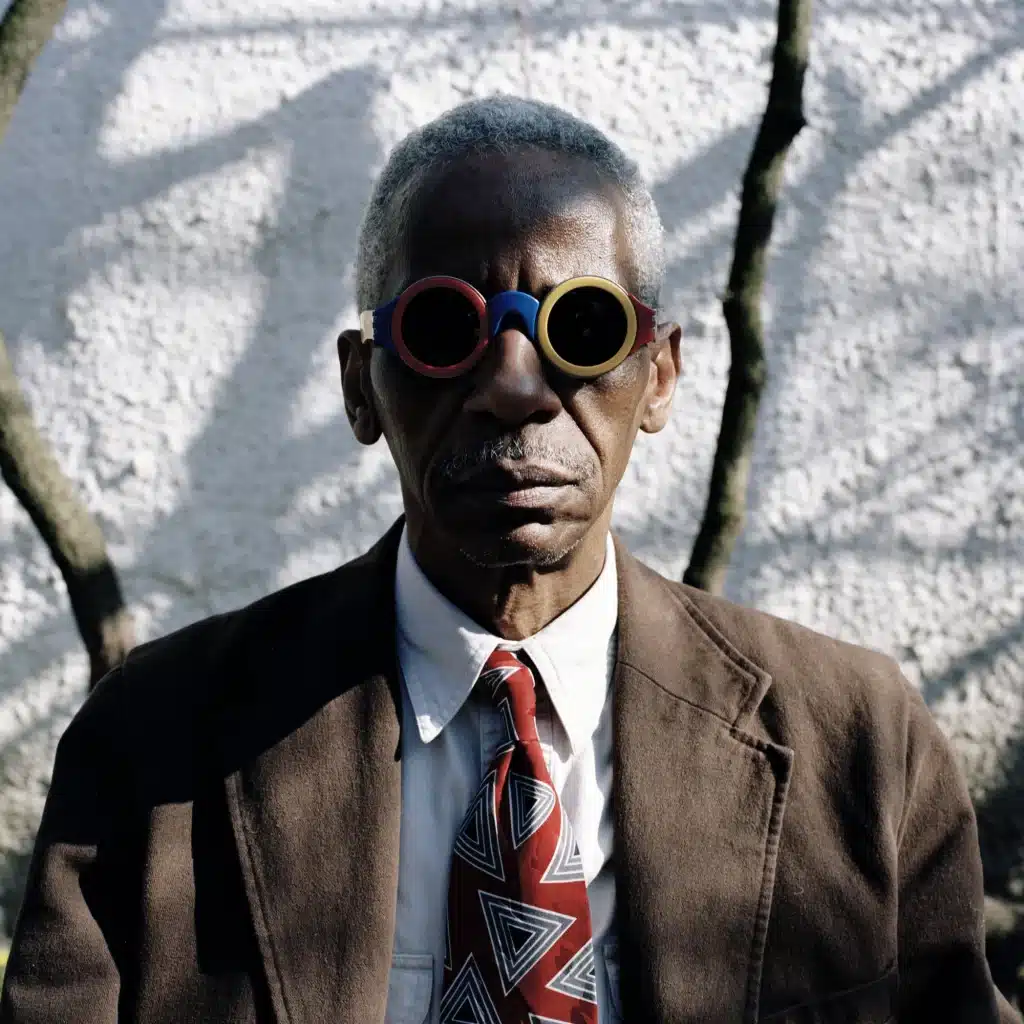The Right People at the Right Time
Mills College—a longtime bastion of musical experimentalism—plans to end its degree programs in 2023. For decades, the school has been home to some of the most forward-thinking minds in chamber music.

This past March, Oakland, California’s Mills College announced plans to stop accepting new undergraduates and granting degrees. The news has been met with sorrow by those familiar with Mills’ extraordinary musical history. For nearly a century, under the guidance of a series of visionary leaders, the college—whose student body includes female-identifying and non-binary undergraduates and graduate students of all genders—has been a hotbed of innovative music-making, home to many of the great names in experimental and electronic music and improvisation. Less well-known is Mills’ rich history in the realm of chamber music, and the role chamber music has played in fostering the college’s culture of radical open-mindedness. Mills’ recent decision, attributed by its president to “the economic burdens of the COVID-19 pandemic, structural changes across higher education, and Mills’ declining enrollment and budget deficits,” not only signals the end of a remarkable era at Mills; it may be a sign of a difficult changes ahead for musical education in America.
Mills was founded in 1852, but its significance in the world of contemporary music began in earnest in 1928 when, at the initiative of music department chair Luther Marchant, the college’s Jeannik Méquet Littlefield Concert Hall was built. It turns out to have been no ordinary hall, says David Harrington, founding violinist of the Kronos Quartet. “There are vibes in that concert hall, can I just say that?” Harrington enthuses. “There are a few concert halls I’ve played in that have vibes like that. Another is Carnegie Hall, another is the Concertgebouw … Teatro Colon in Buenos Aires, La Scala. I would say Mills College has as much vibe as any of those.”
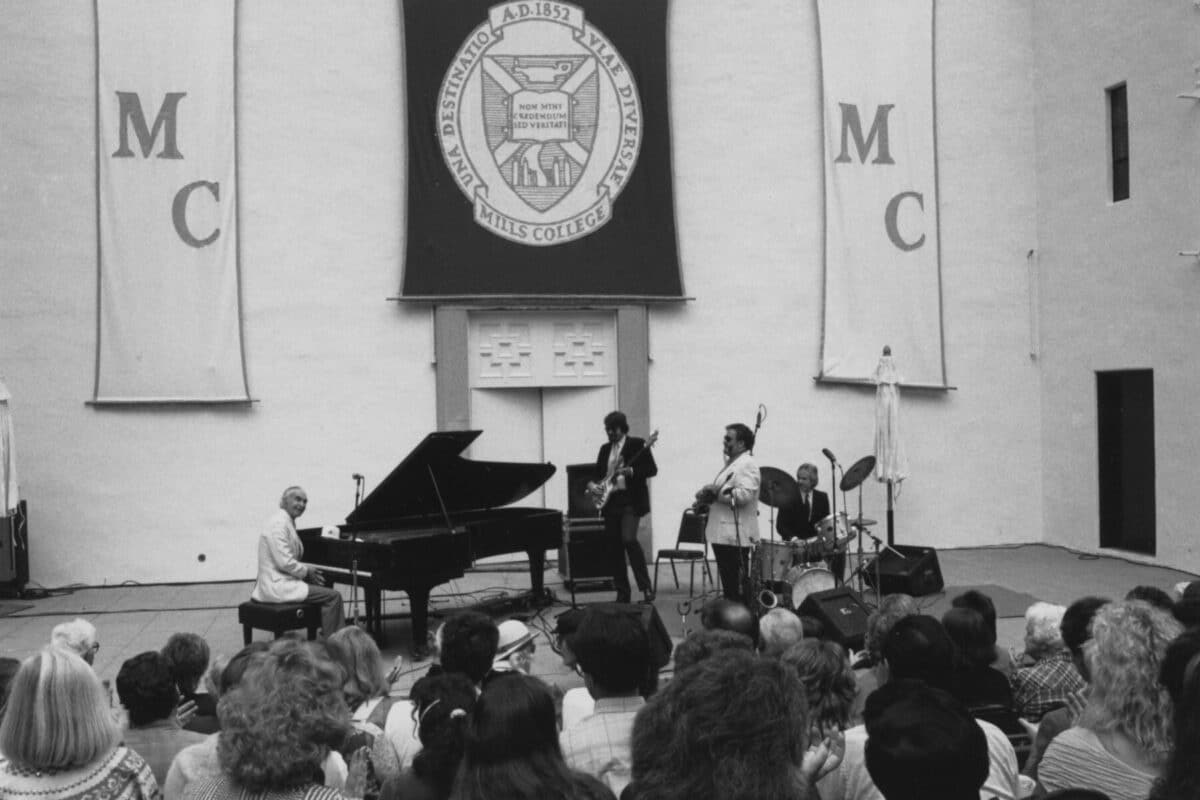
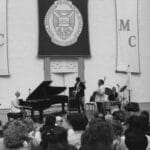
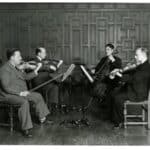
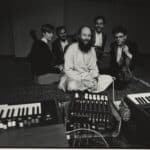
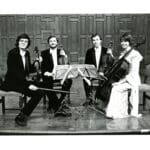
Not only was the hall special. So was the community of listeners that filled it. Famed flutist Georges Barrère paid a 1936 visit with his Barrère-Salzedo-Britt Trio, and afterward wrote to the great chamber music patron Elizabeth Sprague Coolidge: “Mills College was a revelation. The best audience on this tour—and perhaps all around the best we ever had.”
Coolidge was closely involved with Mills. When the new concert hall was built, composition professor Dominick Brescia wrote a Suite for Piano and Woodwinds for the dedication, and Coolidge, Brescia’s friend and former student, played the piano part. Once the hall opened, Marchant inaugurated Mills’ Summer Sessions, hiring as resident ensemble Belgium’s Pro Arte Quartet—favorites of Coolidge, and noted exponents of contemporary composers including Bartók, Honegger, Barber, and Milhaud. When Brescia retired, Marchant contracted Milhaud, considered France’s greatest living composer, to replace him. Coolidge helped fund the position. And in 1952, the Coolidge Foundation commissioned Walter Piston’s Fourth Quartet to celebrate Mills’ hundredth anniversary. Premiered by the Hungarian Quartet, it was dedicated to Coolidge.
Mills’ Pro Arte era ended in 1940. For the next fifteen years, another eminent ensemble was in residence: the Budapest Quartet. The Pro Arte’s influence nonetheless lingered in myriad ways. Harrington ascribes some of Littlefield Hall’s “vibe” to a tragic onstage incident from 1949: the in-performance, fatal heart attack of cellist Robert Maas, formerly of the Pro Arte, and by that time a member of the Paganini Quartet. According to Harrington, the Paganini “kept going. Another cellist was in the audience, and came up and finished the concert with them!” Harrington recalls how later, during Kronos’ own residency, former Pro Arte violist Germaine Prévost welcomed the young quartet to the community: following Kronos’ rendition of Bartók’s Fourth—a work dedicated to the Pro Arte—Prévost jumped up. “He was about four feet ten,” Harrington recalls. “He had a really low voice, he sounded like a bullfrog, and he yelled, ‘Bravo!’”
Mills’ Summer Sessions weren’t just about quartets. Painters Fernand Léger and Max Beckmann, writer André Maurois, and Milhaud all came, in accordance with an explicit policy from college president Aurelia Reinhardt to welcome exiled European artists. Dance was on offer, too: Martha Graham was one of the instructors, Merce Cunningham a student, and music was provided first by experimental composer Henry Cowell, and then by his students John Cage and Lou Harrison. An outgrowth of dance classes was Cage’s Concert of Modern American Percussion Music, staged in 1940.
1940 also marked the arrival of Milhaud, whose polytonal and jazz-inspired compositional style was a world away from Cage’s then dance-based approach. Yet Milhaud brought to Mills the same open-minded spirit that Cage championed. Cellist Bonnie Hampton, who began an association with Mills in the ‘50s, remembers him as “interested in everything, involved in everything—in a very quiet way, because that was his personality.” In Hampton’s view, the French composer’s presence was “incredible for the students, because he really got them writing. They didn’t agonize over every little note. They poured the music out and, in a way, found their voice.” Milhaud was known to encourage each student’s individuality. When a young Dave Brubeck came to study with him, Milhaud famously asked what he most enjoyed playing. “Boogie-woogie,” said Brubeck. “So, why are you trying to do something else?” asked Milhaud. “Learn your technique, because through technique you will be free. That’s the path you have to follow.” Other Milhaud students at Mills included such diverse voices as William Bolcom, Morton Subotnick, and Steve Reich (who also studied with Milhaud’s colleague, Italian composer Luciano Berio).
In the mid-50s, the Budapest’s residencies came to a close, and the profile of chamber music at Mills changed. One connecting link between the old and new eras was Hampton, who remembers joining the Budapest and Prévost for a Milhaud sextet. Soon after, she was performing as a member of the Mills Chamber Players, a clarinet-violin-cello-piano ensemble that gave the West Coast premiere of Messiaen’s Quatuor pour le fin de temps, and toured extensively with it. Another member was Subotnick, a clarinetist as well as composer.
Before long, the MCP evolved into a larger ensemble, with a thirteen-player core and a characteristic programming style: the Mills Performing Group. The MPG style was to pair Bach and Messiaen; or group Bach and Marin Marais with Pauline Oliveros, Anthony Martin and Charles Boone; or Satie with Stravinsky, Milhaud, Varèse and Subotnick. David Bernstein, Mills’ current music department chair, points to a “dialectic between older repertoire and brand-new repertoire” that relied on the MPG theory “that the music of the present can inform our appreciation and performance of the music of the past, and the music of the past can do the reciprocal.”
The focus on contemporary music was intensified when, thanks to a 1966 Rockefeller Grant, the MPG was merged with the San Francisco Tape Music Center. This electronic music nonprofit, founded four years earlier across the Bay by Subotnick, Oliveros, and Ramon Sender, had already pioneered the first Buchla synthesizer, and hosted minimalists Terry Riley and Steve Reich in performance. Relocating to Oakland, the SFTMC became the Center for Contemporary Music, and Mills achieved a maximal level of compositional ferment.
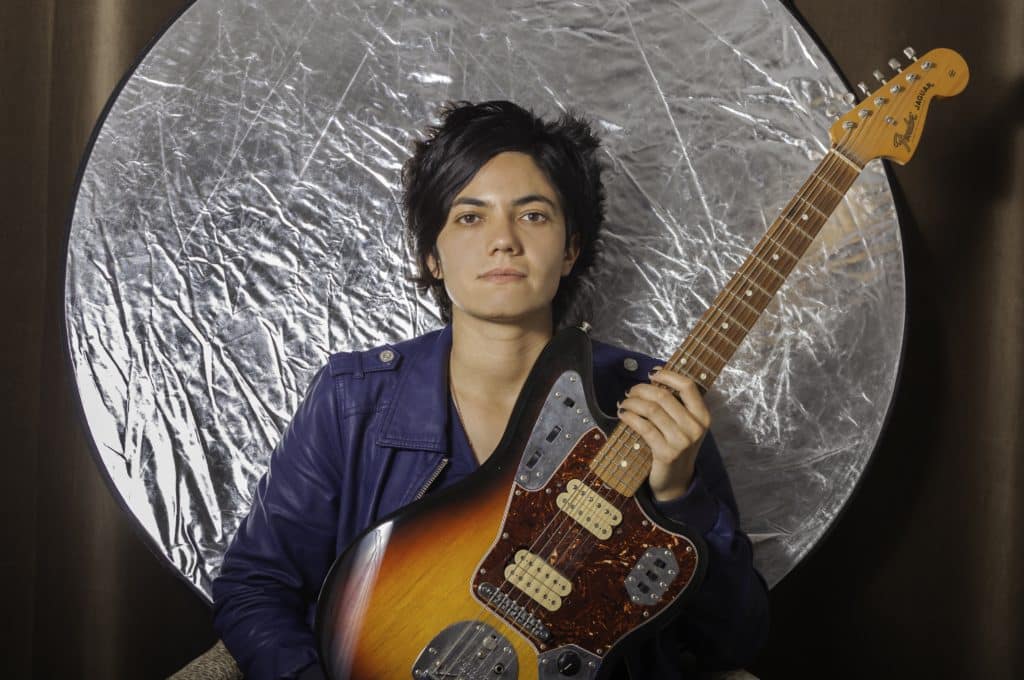


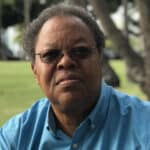
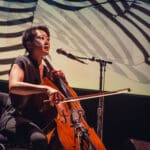
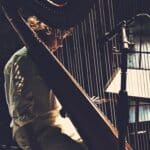
Increasingly, musical barriers—between composition and improvisation, electronic and acoustic music, contemporary and jazz styles—were broken down. Even the machines got in on the ensemble spirit. Composer-trombonist George Lewis, a computer music pioneer who would later teach at Mills, remembers a late 1970s visit when he met David Behrman and his associates from the League of Automatic Music Composers. “They had these networked computers,” says Lewis, “and it sounded like people improvising. I thought that was the most incredible thing I’d ever seen.” On the same trip, Lewis first encountered a Commodore PET computer. “Usually, when you went into these computer music centers, they didn’t let you touch anything. There was a real sense of gatekeeping,” Lewis explains. “I said, ‘Do you think I could use this?’ They said, ‘Well, sure.’ They didn’t ask me if I knew how to use it, they just said, ‘Yeah, turn it on and use it.’ I was able to find my own way. And I realized that was the whole ethos of the place. People would come to the CCM and they would let people find their own way and create a community, and get help, and be open.”
Just how Mills’ unique ethos developed has been the subject of career-long curiosity for Bernstein. He can only ascribe it to “the serendipity of having the right people at the right time,” naming Milhaud as one of those people, along with Subotnick who, for Bernstein, is “an incredible musician, an innovator, and he’s open, he has a big heart, he’s a visionary … he’s a genius.” Then there was Margaret Lyon, who in Harrington’s opinion had an “incalculable” influence on Mills and on music. It was Lyon who hired Berio, Subotnick, Riley—and Kronos.
The arrival of Kronos at Mills—more than twenty years after the Budapest’s residency had ended—was funded in part by one of Chamber Music America’s first residency grants. Only a few years old at the time, Kronos came ready to explore anything and everything musically: residency highlights included premieres of the quartet’s “Purple Haze” and Rite of Spring arrangements, a performance of James Brown’s “Sex Machine” with a robot named Elvik, and the beginnings of one of history’s most productive composer-ensemble relationships, with Terry Riley. Riley, a professor of Indian classical music at Mills since 1971, “hadn’t written notated music for a long time,” according to Harrington. But, coaxed back into notation, he ended up creating a staggering twenty-five works for Kronos. One, “Cadenza on the Night Plain,” was dedicated to Lyon.
For the past twelve years, Mills has once again had a quartet-in-residence: the Eclipse Quartet. Fittingly, the Eclipse has performed three Milhaud quartets at Mills, worked with Subotnick, and performed a work written by faculty composer Zeena Parkins (sister of two Eclipse members) for the quartet and percussion instruments from Lou Harrison’s personal collection.
Into this millennium, the atmosphere created by Marchant, Milhaud, Subotnick, and Lyon has continued to inspire Mills students in ways other schools might not have. Ava Mendoza, a guitarist known for her expansive use of effects pedals, says that Mills in the mid-aughts “was an ideal place for me to go. I was already pointed in a free jazz and free improvisation direction. I don’t know of any other school that’s as open and as specialized in that.”
“I ended up studying a lot of electronic music,” says Mendoza. “Because I used synths, and because I got into computer music while I was there, it got me into guitar pedals and the whole sonic world of the instrument. It opened up this whole other world of guitar for me.”
Attending Mills at the same time, experimental cellist Theresa Wong spent her studies interpreting repertoire by contemporary composers and students, but also playing amplified bicycle and jamming in a rockabilly punk band. “And nobody thought it was too extreme,” says Wong. “It was just the norm.” Wong notes that, despite Mills’ international reputation, on campus “you often played your best shows for five people.”
“It’s important to have places like that,” Wong believes, “places that are kind of ignoring the economic feasibility of what they’re doing, because that’s just so important to experimentation.
“More and more institutions and universities are just losing that—in any field, it’s not just music,” she laments. “I think that’s sort of the tip of the iceberg of something a lot bigger that we have to really question and act towards, because that’s leading us towards a really homogeneous and soulless culture.”
As the college faces an altered future, Bernstein is busy, along with former CCM director Maggi Payne, archiving historic Mills recordings. The fate of the magical concert hall remains uncertain.


